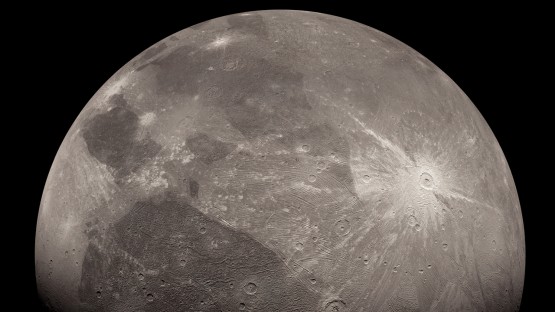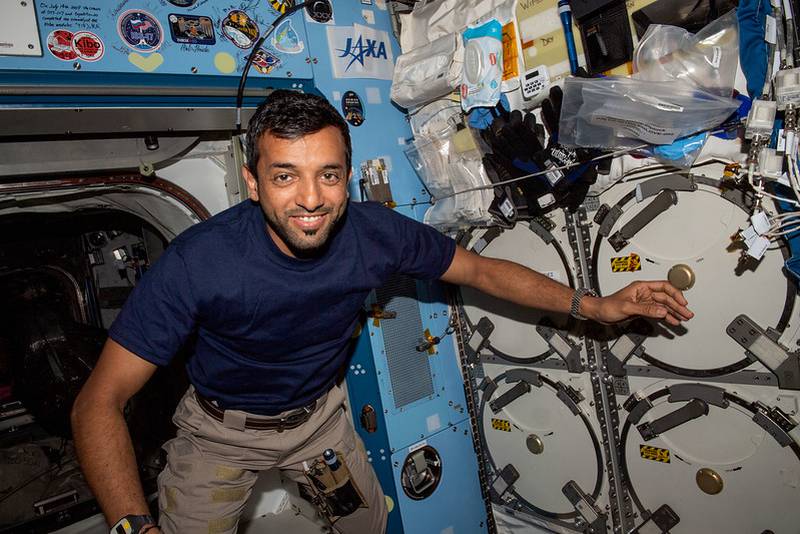With its delicate infrared cameras and high-resolution spectrometer, the James Webb Area Telescope (JWST) is revealing new secrets and techniques of Jupiter’s Galilean satellites – specifically Ganymede, the biggest moon, and Io, probably the most volcanically energetic.
In two separate publications, astronomers who’re a part of JWST’s Early Launch Science program report the primary detection of hydrogen peroxide on Ganymede and sulfurous fumes on Io, each the results of Jupiter’s domineering affect.
Samantha Trumbo, a 51 Pegasi b postdoctoral fellow within the Division of Astronomy within the Faculty of Arts and Sciences, led the examine of Ganymede, which printed July 21 in Science Advances.
Utilizing measurements captured by the close to infrared spectrometer on JWST, the crew detected the absorption of sunshine by hydrogen peroxide across the north and south poles of the moon, a results of charged particles round Jupiter and Ganymede impacting the ice that blankets the moon.
“JWST revealing the presence of hydrogen peroxide at Ganymede’s poles exhibits for the primary time that charged particles funneled alongside Ganymede’s magnetic area are preferentially altering the floor chemistry of its polar caps,” Trumbo mentioned.
The astronomers mentioned the peroxide is produced by charged particles hitting the frozen water ice across the poles and breaking the water molecules into fragments – a course of known as radiolysis – which then recombine to type hydrogen peroxide. They suspected that radiolysis would happen primarily across the poles on Ganymede as a result of, in contrast to all different moons in our photo voltaic system, it has a magnetic area that directs charged particles towards the poles.
“Similar to how Earth’s magnetic area directs charged particles from the solar to the best latitudes, inflicting the aurora, Ganymede’s magnetic area does the identical factor to charged particles from Jupiter’s magnetosphere,” she mentioned. “Not solely do these particles lead to aurorae at Ganymede as nicely, however additionally they affect the icy floor.”
Trumbo and Michael Brown, professor of planetary astronomy on the California Institute of Know-how, the place Trumbo not too long ago obtained her Ph.D., had earlier studied hydrogen peroxide on Europa, one other of Jupiter’s 4 Galilean satellites. On Europa, nevertheless, the peroxide was detectable over a lot of the floor, maybe partially as a result of it has no magnetic area to guard the floor from the fast-moving particles zipping round Jupiter.
“That is probably a very necessary and widespread course of,” Trumbo mentioned. “These observations of Ganymede present a key window to know how such water radiolysis would possibly drive chemistry on icy our bodies all through the outer photo voltaic system, together with on neighboring Europa and Callisto (the fourth Galilean moon).”
The second paper accepted for publication within the journal JGR: Planets, experiences new JWST observations of Io that present a number of ongoing eruptions, together with a brightening at a volcanic advanced known as Loki Patera, and an exceptionally vibrant eruption at Kanehekili Fluctus. As a result of Io is the one volcanically energetic moon within the photo voltaic system – Jupiter’s gravitational push and pull heats it up – research like this give planetary scientists a distinct perspective than may be obtained by learning volcanoes on Earth.
“This exhibits that we will do unbelievable science with the James Webb Area Telescope on photo voltaic system objects, even when the item is basically very vibrant, like Jupiter, but in addition whenever you take a look at very faint issues subsequent to Jupiter,” mentioned lead creator Imke de Pater, professor emerita of astronomy and earth and planetary science on the College of California, Berkeley. De Pater and Thierry Fouchet from the Paris Observatory are co-principal investigators for the Early Launch Science photo voltaic system statement crew, certainly one of 13 groups given early entry to the telescope.



